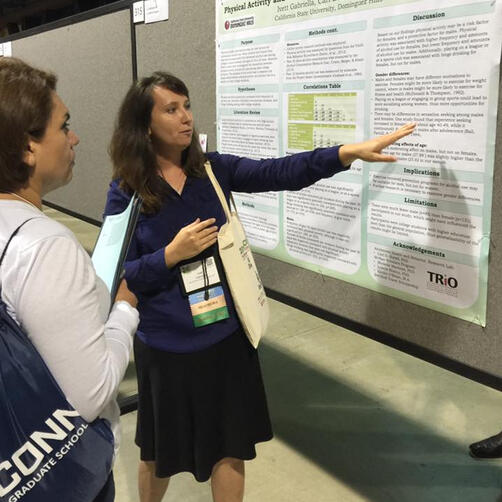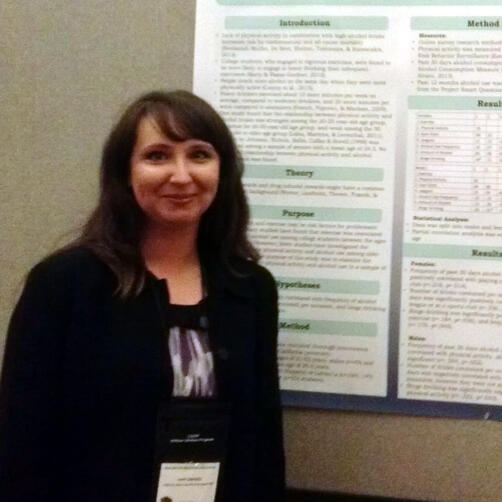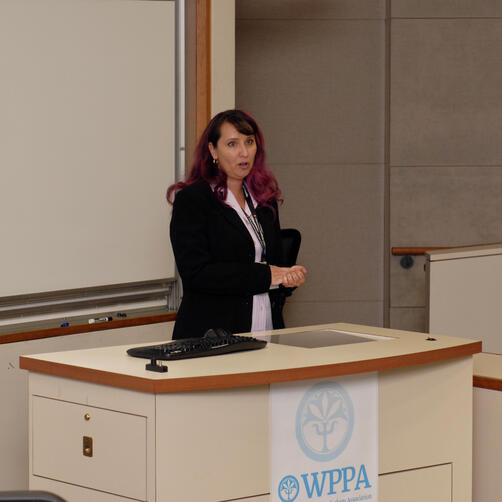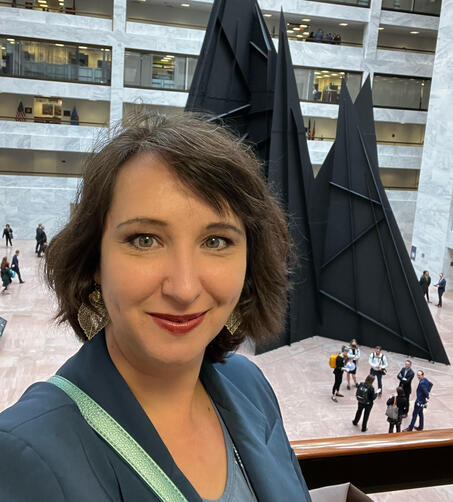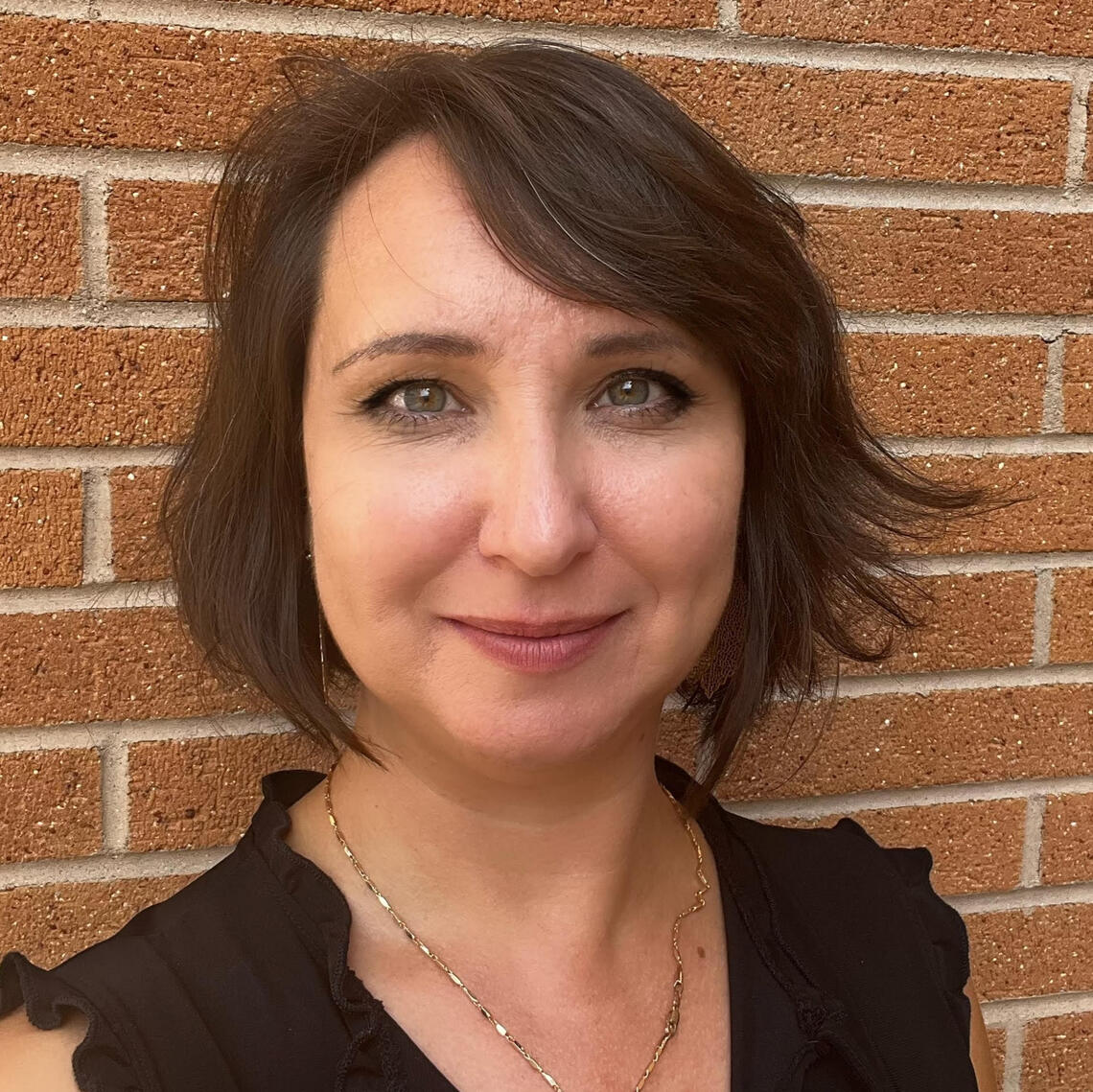
Ivett Gabriella
I’m Ivett Gabriella, an assistant professor of Psychology at Moreno Valley College. I currently teach Biopsychology (PSYC-2), Introduction to Psychology (PSYC-1), and the Psychology of Human Sexuality (PSYC-11).
I’m originally from Hungary 🇭🇺 and moved to the U.S 🇺🇸. when I was 19 years old to work as a babysitter. My path in higher education has been anything but traditional, which is why I understand that everyone’s journey looks different. I started studying Psychology 𝚿 at Coastline Community College, where I earned my A.A. degree and completed a transfer program. From there, I transferred to California State University, Dominguez Hills (CSUDH), and finally earned my bachelor’s degree at the age of 36. I then continued on to complete a master’s degree in Clinical Psychology at CSUDH.
While completing my studies, I discovered a passion for understanding the brain mechanisms 🧠 that shape behavior, which led me to pursue a Ph.D. in Psychology at the University of California, Riverside, with a focus on behavioral neuroscience. My research explores the neural circuits involved in eating behavior, hunger, satiation, body-weight regulation, and the neurotransmitter systems that influence these processes. I work with rat models and have published research on how different brain regions—including the lateral septum, septohypothalamic nuclei, and lateral hypothalamus—modulate feeding behavior.
Outside the classroom, I love gardening 🌿 and caring for my houseplants—it’s my way of slowing down and staying grounded. I find a lot of joy in watching things grow. Just like plants, every student learns and thrives at their own pace, and I enjoy creating an environment where you can explore, ask questions, and develop your strengths as you grow.
Research
CURRENT PROJECTGABA agonist injection into the LH suppresses LS-induced feedingIt is important to understand the neural circuits that control eating behaviors, especially since more than 40% of adults in the U.S. are either overweight or obese. Previous research has shown that the Lateral Septum (LS) and the Lateral Hypothalamus (LH) are connected anatomically and functionally. This study aimed to determine whether the connection between the LS and the LH associated with eating is ipsilateral, contralateral, or both via activating and inactivating GABAA receptors. We bilaterally implanted cannulas in adult male rats' LS and LH. The rats received either a GABAA agonist (muscimol; 0.3 μg / 0.3 μl) or an antagonist (picrotoxin 0.1 μg / 0.3 μl) in both brain regions to elicit contrasting responses, such as inducing feeding in one brain region while inhibiting it in the other. The injections were administered either ipsilaterally, contralaterally, or bilaterally in a counterbalanced design to investigate which pathway could suppress the induced feeding. The data was assessed by a 2-way repeated measures ANOVA. Results showed that feeding initiated by a unilateral muscimol injection in the LS (n = 13) could be significantly suppressed by a contralateral and a bilateral administration of muscimol into the LH. Post hoc analysis revealed that the mean difference between food intake induced by unilateral muscimol injection in the LS and contralateral muscimol injection in the LH was 7.4 ± 3 g (p = 0.03) during the second hour, and 8 ± 2.9 g (p = 0.02) during the third hour. However, the ipsilateral administration did not significantly suppress food intake. A unilaterally injected picrotoxin dose into the LH (n=11) was not significantly suppressed by either an ipsilateral, contralateral, or bilateral injection of picrotoxin in the LS. These results indicate that LH signals can override LS signals, placing the LH downstream from the LS and that this connection is contralateral, not ipsilateral. This study contributes to future research about overweight and obesity trends by providing new knowledge on the specific connections between LS and LH.
---PAST PROJECTSGABA Receptor Antagonism Elicits Feeding in the Septohypothalamic NucleusCurrent rates of obesity and eating disorders have been steadily increasing, highlighting the importance of understanding the neural circuits of eating. This study explores the potential role of an understudied brain region, the Septohypothalamic Nucleus (SHy), in feeding control. Based on a serendipitous observation, we hypothesized that central injections of GABAA and GABAB antagonists in the SHy would elicit feeding. Adult male Sprague-Dawley rats (n = 39) were microinjected with a vehicle or GABAA receptor antagonists (bicuculline or picrotoxin) or a GABAB receptor antagonist (2-(S)-(+)-2-hydroxy-saclofen [2-OH saclofen]). Food and water intakes were measured 1, 2, 3, and 24 hours after injection, and behavioral responses (sleeping, resting, locomotor and vigorous activity, grooming, eating, drinking) were measured for 1 hour. Results showed increased food intake after bicuculline (p < 0.001) and picrotoxin (p = 0.03) injections during the 2nd and 3rd hours compared to controls. In addition, we found increased food intake 1 hour after 2-OH saclofen injections (p < 0.001). As for other behaviors, all three of the drugs suppressed resting (bicuculline: p < 0.001; picrotoxin < 0.001; 2-OH saclofen: p < 0.01) and increased locomotor activity (bicuculline: p < 0.001; picrotoxin < 0.001; 2-OH saclofen: p = 0.02). Our findings suggest that GABAA or GABAB receptor deactivation by antagonists elicited eating with a delayed effect and increased general arousal in rats. These findings collectively suggest that SHy neurons expressing GABAA and/or GABAB receptors are elements of a neurocircuit that participates in the regulation of feeding.
Keywords: GABA receptors, Septohypothalamuc nuclei, SHy, feeding, eating---Stimulation of GABA Receptors in the Lateral Septum Rapidly Elicits Food Intake and Mediates Natural FeedingLink: https://www.mdpi.com/2076-3425/12/7/848?utmcampaign=releaseissuebrainsciutmmedium=emailutmsource=releaseissueutm_term=titlelink9This study explored the roles of gamma-aminobutyric acid (GABA) receptors within the LS in the control of food intake. Experiments with a rat model (n ≥ 11/group) showed that LS microinjection of the GABAA receptor agonist, muscimol, and the GABAB receptor agonist, baclofen hydrochloride (baclofen), elicited intense, dose-dependent feeding. In contrast, LS pretreatment with the GABAA receptor antagonist, picrotoxin, markedly reduced the muscimol-elicited feeding, and pretreatment injections with the GABAB receptor antagonist, 2-hydroxysaclofen (2-OH saclofen), reduced the baclofen evoked response. Next, we showed that picrotoxin injection at the beginning of the dark phase of the light-dark cycle—when rats show a burst of spontaneous eating—reduced naturally occurring feeding, whereas 2-OH saclofen was ineffective. These results indicate that the activation of LS GABAA and GABAB receptors strongly stimulates feeding and suggests potential roles in feeding control neurocircuitry. In particular, our evidence indicates that endogenous LS GABA and GABAA receptors may be involved in mediating naturally occurring nocturnal feeding.
Keywords: eating; feeding; lateral septum; gamma-aminobutyric acid; GABA receptors; rat model; central injections
curriculum vitae
Download CV here:
Contact
Ivett Gabriella
University of California, Riverside
Psychology Department
Office Location: LSB 1526
900 University Ave, Riverside, CA
92521
